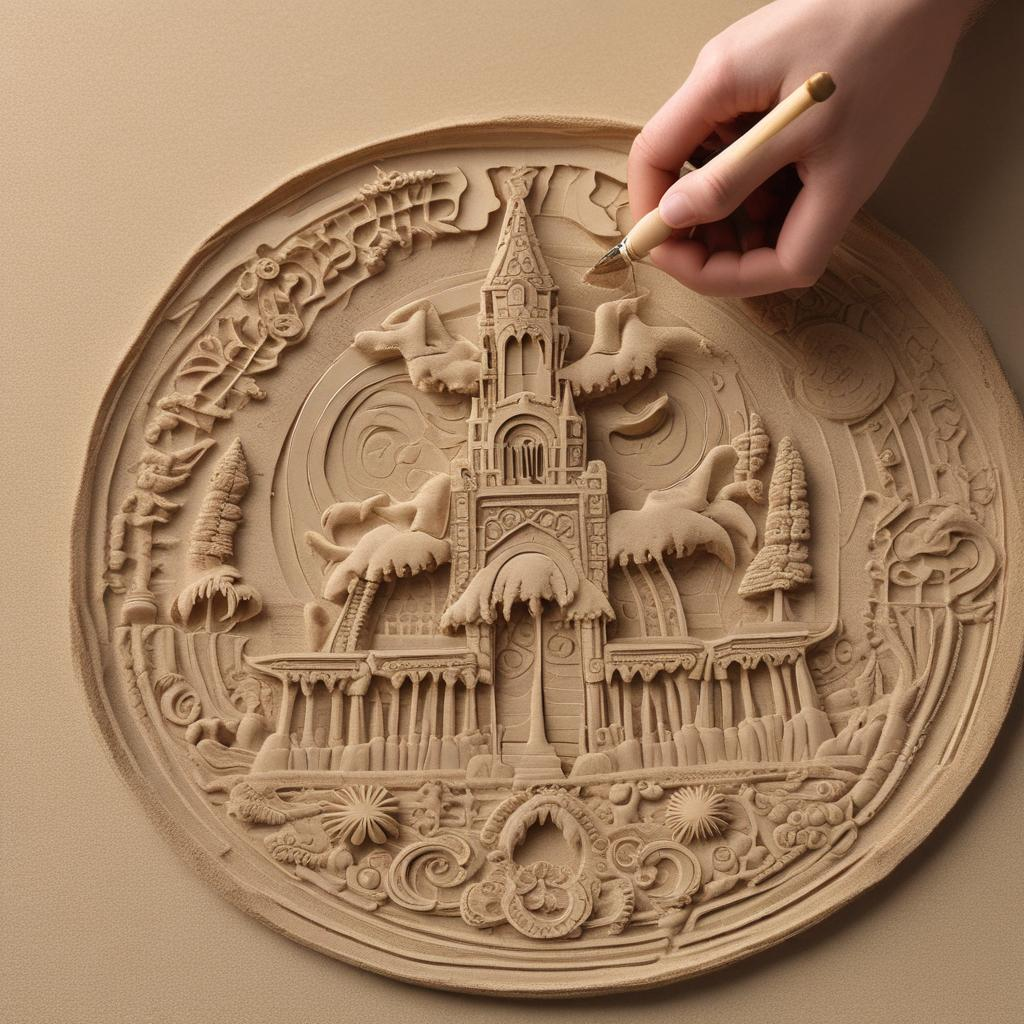Sand art is a form of expression that involves sculpting and painting with sand to create detailed and evocative works of art. This medium is often seen in competitions, festivals, and beaches around the world, where artists utilize various techniques and tools to transform ordinary sand into extraordinary sculptures and pictures. Here, we discuss the top techniques and tools used in creating intricate sand art, offering insights into how these fine pieces are crafted.

1. Understanding Sand Composition
One of the most critical aspects of sand art is using the right type of sand. Not all sand is suitable for sculpting; it needs to have the right grain size and moisture content to stick together properly. Beach sand mixed with just the right amount of water is typically ideal. Artists often test different sand types and mixtures to find the perfect balance that allows the sand to maintain its shape without crumbling.
2. Building a Strong Foundation
Creating a durable sand sculpture starts with a solid base. Typically, artists compact the sand into blocks or forms to ensure stability. Compaction is done using tools like tampers or simply by hand and feet to compress the sand and eliminate air pockets, which could cause the sculpture to collapse. Sometimes, water is added during compaction to help the particles bind together.
3. Using Forms and Molds
To achieve specific shapes or intricate details, artists use forms and molds. These can be anything from simple buckets to complex plastic or wooden frameworks that are packed with sand then carefully removed. Forms are particularly useful for constructing the initial layers or "base" of a sculpture on which more detailed work can be executed.
4. Carving Techniques
- Subtractive Carving: This is the most common technique where the artist starts with a large block of compacted sand and removes sand to reveal the sculpture within. Using a variety of tools, artists carve out details and shape the sculpture meticulously.
- Additive Carving: Sometimes additional sand is needed to build up areas of a sculpture. Mixtures of sand and water are applied to areas requiring more volume or intricate detail.
5. Tools of the Trade
Different stages and styles of sand art require various tools. Common tools include:
- Shovels and Trowels: Used for moving large amounts of sand and rough shaping.
- Buckets and Forms: Essential for compacting and creating uniform layers and shapes.
- Carving Tools: Including palette knives, spatulas, and even melon ballers which are used for detailed carving and creating smooth surfaces.
- Brushes: Soft brushes remove excess sand without damaging finer details, while hard brushes can create texture.
- Straws or Blowpipes: Useful for blowing away loose sand from delicate areas.
6. Fine Detailing
Artists achieve fine detailing by gently scraping away sand to create intricate features like facial expressions, clothing textures, or fine lines in architectural elements. This often requires a steady hand and a great deal of patience, as well as a deep understanding of the material to ensure that these finer elements do not compromise the sculpture’s structure.
7. Preservation Techniques
To help their creations last longer than a few hours, artists may use natural or synthetic binding agents. Spraying a diluted solution of glue and water over the completed sculpture can help the sand grains stick together, protecting the art from light winds and minor disturbances. However, these are generally used sparingly to maintain the natural look and feel of the sand.
8. Photographic Documentation
Since sand sculptures are ephemeral and subject to the elements, capturing these artworks through photography is crucial. High-quality images allow the artist to preserve and share their work with a broader audience beyond the physical lifespan of the sculpture.
9. Continuous Practice and Experimentation
Mastering sand art requires constant practice. Professional sand artists often experiment with different sands, compaction techniques, and structural strategies to challenge themselves and push the boundaries of what can be achieved with sand. Experimentation is also crucial in developing new methods that might result in more detailed and long-lasting sculptures.}


.jpg)
.png)
.png)


0 Comments